Let me introduce you to the softest, most pillowy, most delicious sourdough milk bread ever.
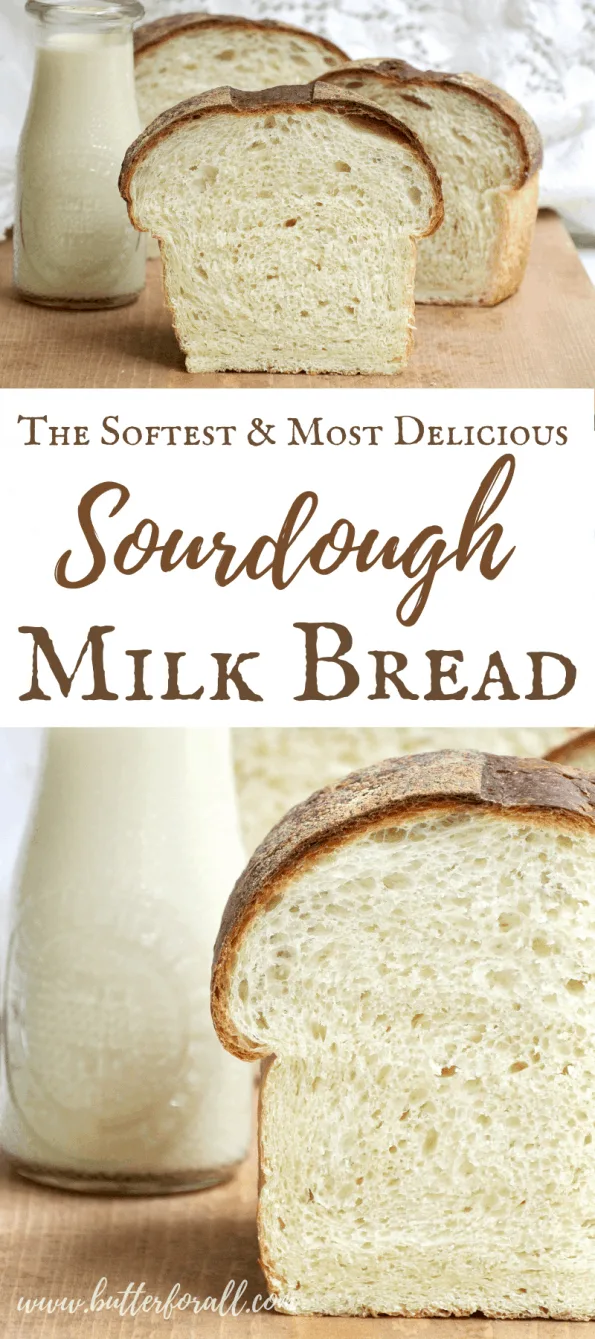
This super soft and light bread is made with fresh milk and honey for the perfect tender sweet crumb. It makes excellent sandwich bread, French toast, and croutons … if it lasts that long.
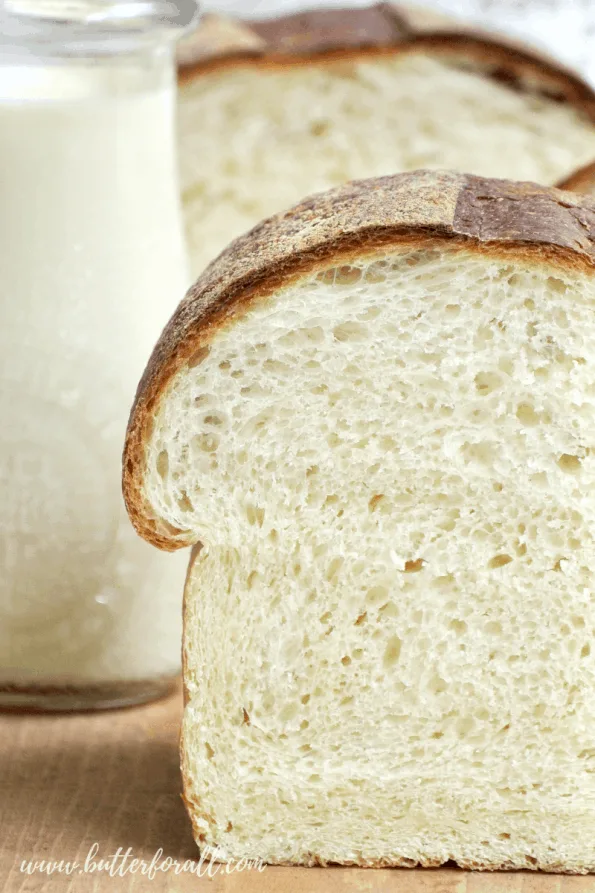
Just like all my other sourdough recipes this special sourdough milk bread goes through a long, slow fermentation that helps to break down hard to digest gluten and activate tummy-friendly enzymes. I would go so far as to say this is as close to “no guilt” white bread as you can get!
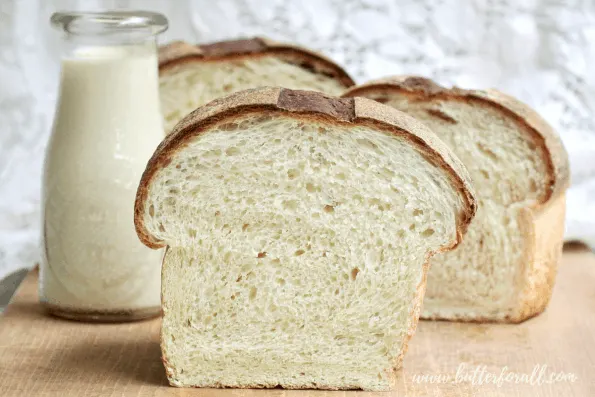
The recipe makes two sandwich-size loaves, perfect for everyday eating, gifting, or freezing for convenience.
Everybody who has tried this bread has fallen in love with its soft texture and sweet but full-bodied flavor!
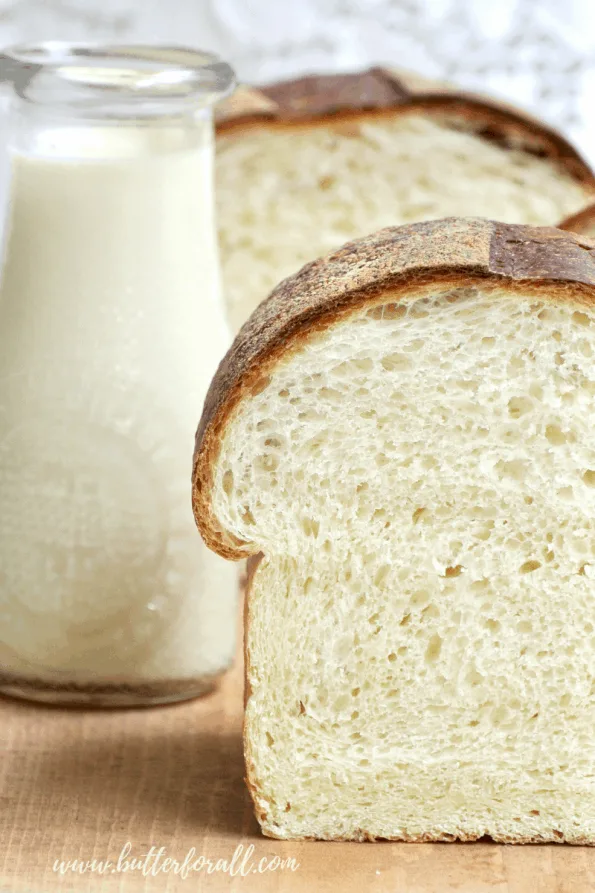
Try this bread in my favorite sandwich, the Monte Cristo! Or my second favorite, a simple grilled cheese with homemade Healthy Probiotic Mayonnaise!
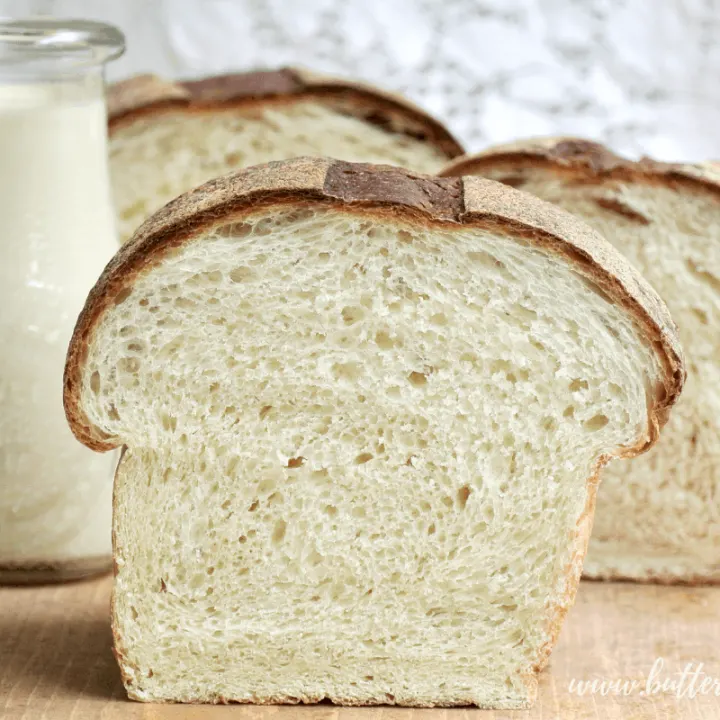
Sourdough Milk Bread
This soft sourdough milk bread is lightly sweetened with honey for the perfect balance of flavors!
Ingredients
- 250 grams (1 cup after being stirred down) active sourdough starter, 100% hydration
- 300 grams (2 1/4 cups) organic all-purpose flour
- 300 grams (2 1/4 cups) organic bread flour
- 40 grams (2 tablespoons) raw honey
- 420 grams (1 2/3 cups) milk (I use raw milk)
- 17 grams (2 1/2 teaspoons) salt
Instructions
The Night Before
- In a large bowl gently mix all ingredients, just until incorporated. Let the dough rest for 10 minutes.
- If measuring by volume, you might need a little more milk depending on how your dough feels. The dough should be tacky but not too sticky.
- Using slightly wet hands do several rounds of stretch and folds in the bowl, letting the dough rest for 5 minutes in between each round.
- Once the dough is soft and smooth with long strand gluten development, gently shape it into a ball in the bowl. Cover and proof overnight at room temp (65℉). I let mine go for 10 to 12 hours.
The Next Morning
- Do one round of stretch and fold in the bowl to deflate the dough. Let the dough rest for 10 minutes.
- Butter two loaf pans and set them aside. (I use cast-iron or glass loaf pans)
- Lightly flour your work surface and turn the dough out. Divide in half and gently shape each half into a loaf by first patting the dough into a rectangle. Next, bring the top third toward the center and the bottom third over it. Let the dough rest for a few minutes and then do the same patting out and folding over in the opposite direction. Let the dough rest seam side down for 5 minutes before transferring it into the loaf pan for the final rise.
- Let the dough rise at room temperature until doubled.
- Preheat your oven to 400℉.
- Score the loaves straight down the middle with a lame or razor blade. Spray each loaf lightly with filtered water.
- Bake both loaves side by side in the center of the oven for 30 minutes. Rotate the loaves once at the 15-minute mark.
- Remove the loaves from the oven and let them cool for 5 minutes before turning the loaves out of the pans and cooling them completely on wire racks.
Notes
What size loaf pan?
Both the 8 1/2 by 4 1/2-inch and 9 by 5-inch pans will work well for this recipe. If you use the 8 1/2-inch pans the loaves will be taller. 9-inch pans will give a wide loaf.
Flour Substitutions:
Using 100% bread flour or 100% AP flour is fine. Adjust milk if needed.
If wanting to incorporate whole wheat or ancient grain, use no more than 25% to add flavor and nutrition without affecting texture and rise.
Recommended Products
As an Amazon Associate and member of other affiliate programs, I earn from qualifying purchases.
Want To Learn Everything About Sourdough?
Start with this free guide:
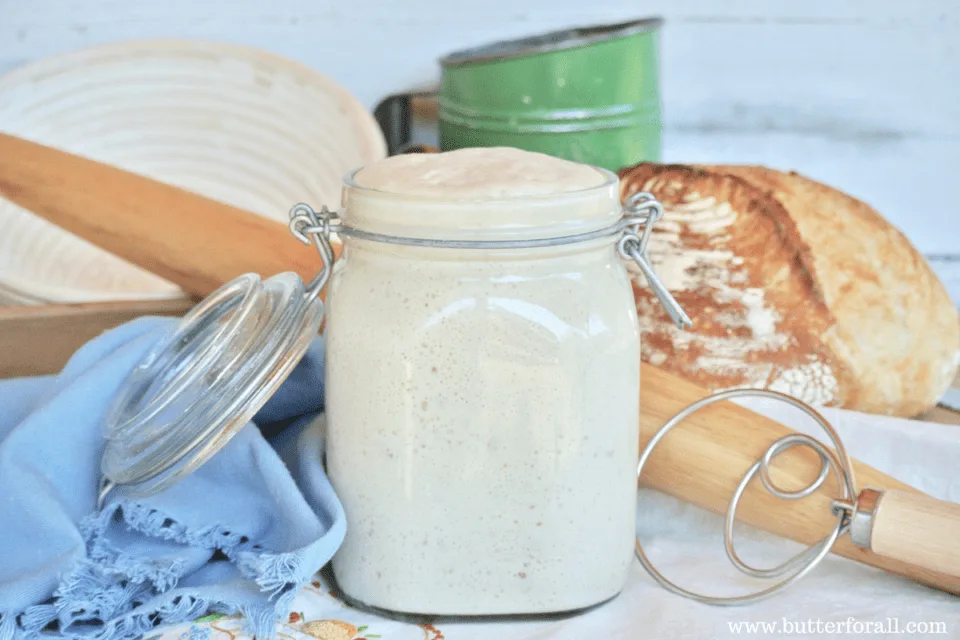
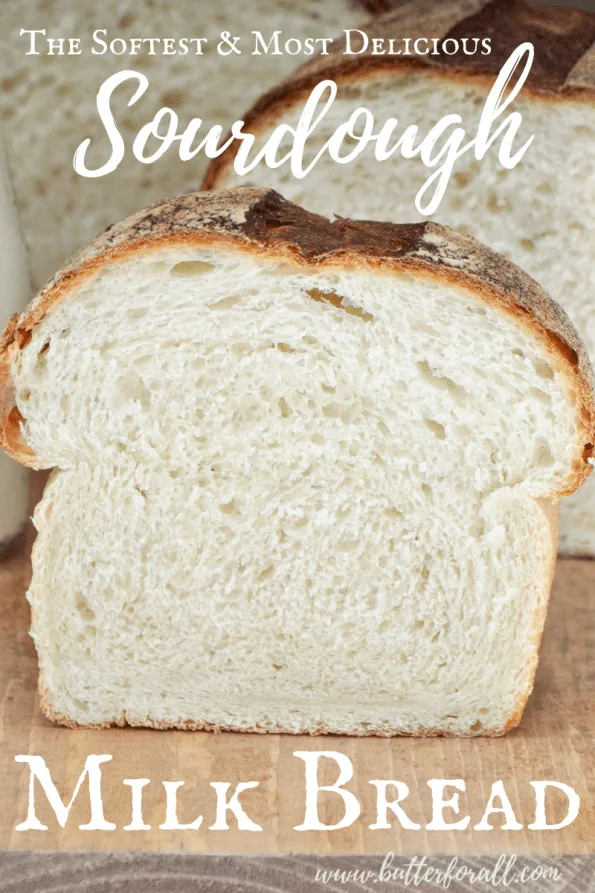



Raina
Monday 7th of April 2025
I've used a handful of your recipes and have loved them all, BUT...this one won my heart! I think it's been about 6 days since I made it and it's still soft enough to use on a sandwich! Outstanding, this is the weekly bread for me! I would like to adjust to make 1 Pullman pan 9x4x4 size. If you know this formula, I'd love to know your calculations. Otherwise I'll have to quit being lazy and configure it myself. Thank you Chef!
Darlene watson
Friday 21st of March 2025
Can I use a liquid starter with this recipe?My starter is made with water potato flakes.And sugar thank you very much.
Butter For All
Friday 21st of March 2025
Hi Darlene,
I don't see why not! The addition of the potato will probably be delicious!
Charlotte
Friday 14th of March 2025
I don’t mean to be an airhead but please help me with measurements ….I want to use some einkorn whole wheat flour….what do I do? Thank you~Also, I have a 13 inch pullman loaf pan- will that work for this amount of dough?
Butter For All
Friday 21st of March 2025
Hi Charlotte,
I would probably add at a maximum 25% whole wheat einkorn. The recipe calls for 600 G total flour, so I would do 450 G of bread flour and 150 g of whole wheat einkorn. I think it'll do really nicely in a 13 inch Pullman.
Liz
Sunday 9th of March 2025
Update: My bread turned out perfect! Thanks for the recipe!
Butter For All
Friday 21st of March 2025
Hi Liz!
I was just reading through your original comment, I'm so happy to hear it worked out!
Cass
Sunday 9th of March 2025
I love this thank you for sharing. I just can’t ever get it to bake at 400 in 30 min per the recipe. It comes out gummy and undercooked. I have tried different times and loaf pans. What should the internal temp be? Thanks!
Butter For All
Friday 21st of March 2025
Hi Cass,
You want to bake to a temperature between 190° F and 200° F. Rich dough, dough with added milk, eggs or butter is baked to a slightly lower temperature than lean dough.